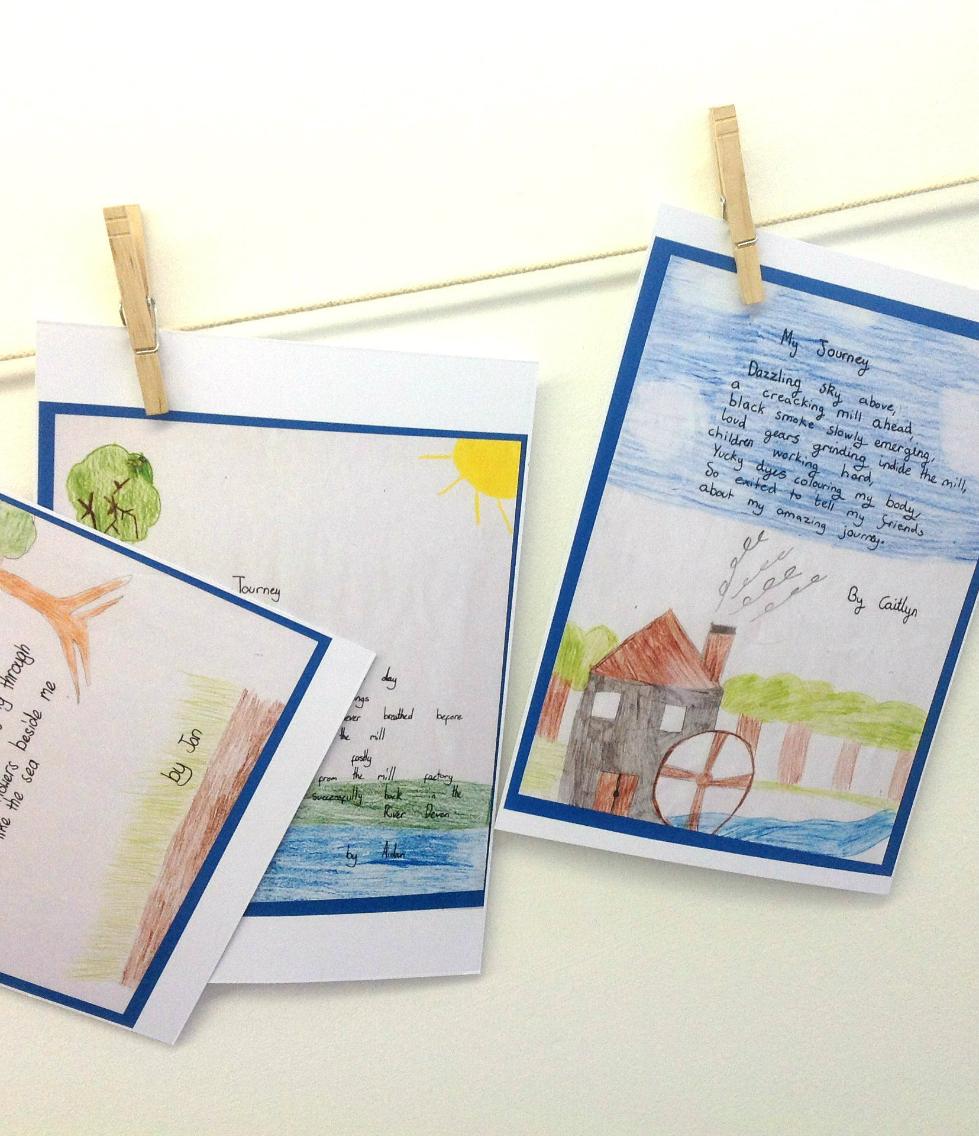
Youngsters from primary schools across Clackmannanshire have contributed to a new exhibition at the University of Stirling.
Drawings, posters and written work from six Hillfoots schools - Alva, Menstrie, Tillicoultry, Coalsnaughton, Strathdevon and Muckhart – are on show at the University’s Pathfoot Building as part of a display on “Industrial Devon”.
The exhibition will be officially launched at event on Saturday 7 June. It will run until August.
For the past year, pupils from primaries five, six and seven have been working with staff and students at the University to explore the history of the area around the River Devon. The river flows from Blairdenon Hill in the Ochils, past Hillfoots villages, and joins the River Forth at Cambus, near Alloa.
Dr Catherine Mills from Stirling’s Centre for Environmental History and Policy said: “The river was used to power mills and to supply water to a variety of industries. It played a significant part in shaping local communities. However, its industrial, environmental and cultural history is often overlooked.
“Over the past year, we’ve been working with local schools to bring that history to life.
“In turn pupils have created posters, creative writing, artworks and other materials to tell the story of their local area. This has formed the exhibition now on show in our Pathfoot Building.
“I’d encourage local people to come along and see it and find out more about the fascinating history we have on our doorsteps.
“Admission is free and I must thank colleagues in the University’s Art Collection for assisting the project and helping to install the exhibition.”
The project - funded by the Strathmartine Trust – was supported by University student volunteers and the Ochils Landscape Partnership.
Jennifer Geller, studying for a Masters in Environmental History at the University, said: “Sometimes it’s the small things that matter to school children. The connections they begin to make between themselves and their everyday world - even something as simple as realizing the burn they cross everyday on their way to school was once choked with pollution from the mills - is a building block of information that allows them to more easily acquire new knowledge later.”
Undergraduate Heather Wilkinson added: “It was great to add a practical dimension to my time studying history at the University and to learn about the local area’s industrial past. The children's enthusiasm for learning and their positive response to the project was truly inspiring. Also it was lovely to hear the children's stories of their family connections to local heritage."
Dr Mills added: “Using materials such as Statistical Accounts, historic images and mapping, the pupils pieced together the history of the River Devon closest to their individual schools. They explored the physical landscape to identify any remaining ‘visible’ clues as well as taking soil and water samples to assess the environmental impacts of the industrial past.
“This prompted lots of discussions. The resulting written and artistic work – on display at the University – shows the children’s perceptions of what life or work the area might have been like in their area … as well as their views of the post-industrial landscape around the river today.
“We were really pleased to be part of this project as its strengthened links between the University and the wider community. Hopefully it has also demonstrated the innovative teaching and research practice we offer at Stirling.
“Perhaps some of our pupil researchers will be back with us in a few years to continue their studies!”
Notes for editors
- Background information
-
** The resulting exhibition is part of a series of free events to promote the local area as part of the Ochils Festival. Visit www.ochils.org.uk for details on this and other free events.
** The project also complements a wider project by the Ochils Landscape Partnership programme project to improve the quality of habitat and recreational appeal of the river and its tributaries. Find out more at www.ochils.org.uk/banks-of-the-devon
